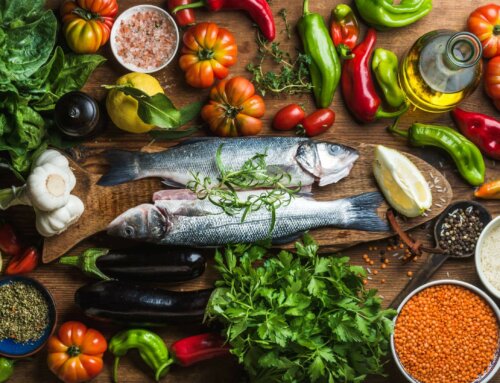Sharing the questions and concerns of real patients can offer you information you might never seek. Although I often teach the same general concepts, it is the actual patients and their questions which make the subject so interesting. Everyone interprets the information in a different way. There is so much for people with diabetes to learn. Take it all in, process it and see if it can help you achieve more control.
- “I love the flavor of salt and I know I need to cut back but I am addicted! I put it on my food before tasting it. I am now on 3 blood pressure pills and a water pill since my physician said my blood pressure is sky high. Please explain about salt and what I can do to cut back.”
Answer
– As with most studies the research changes rapidly. We have always taught eating approximately 1500mg of sodium a day is best for people with diabetes. New research states you can now eat up to 2300mg a day but always check with your health care provider since each person is unique. Sodium is not the enemy since our bodies definitely need some. Sodium aids in digestion as well as regulating fluids. On the other side it does have an effect on heart disease by retaining extra fluid, increasing the heart’s workload and adding to your weight. It is important to understand that salt and sodium are not the same. Salt contains 60% chloride and 40% sodium; the sodium portion is the problem. Sodium can enhance foods flavor and really become addictive or habit forming. Be aware of how much you use and do not add it to the food while you are cooking. Think about ways of boosting flavor with cooking methods like slow cookers, roasting, baking or grilling. The more time flavors have to mingle the less sodium you will need. Substitute foods that contain natural sodium like celery seeds. It adds the salt zing with only 3mg per teaspoon.Try rice wine, cooking wine, low sodium broth, flavored vinegars or small amounts of healthy unsaturated cooking oils for added taste. Add natural spices including garlic, rosemary, parsley, cilantro, tarragon or pepper. Use Mrs. Dash spice mixes which contain everything but salt. Consider sprinkling fresh lemon or lime juice to wake up foods. Tamarind paste is good to replace miso or soy sauce without the huge amount of sodium. Use Walden Farms sauces and dressings to increase flavor without calories or carbohydrates. Foods are labeled differently so do not be tricked. Low sodium is the best choice since it must have 140mg of sodium or less per serving to earn that label. Reduced or less sodium may have more sodium than you think. Many times low sugar/low fat foods may have added sodium to enhance the flavor. For example fat free sour cream, cottage cheese and cream cheese have more than twice the amount of sodium compared to the regular products. Do not overuse salt substitute products which can be just as dangerous. As you reduce the sodium you will taste more of the actual food and get used to real flavors.
- When given a choice I never know which foods are better for my blood sugar. Are there some things I should include in my meal plan?
Answer
– Luckily we have come a long way from teaching “stay away from sugar” since we now know our bodies eventually process all foods to sugar but in different time frames (even proteins). Most diabetes eating plans concentrate more on serving sizes over actual food choices. With that said there are usually foods which can be healthier. I try to recommend a few good options for healthy nutrition as well as low carbohydrate foods. Think about choices that taste good, you are willing to eat, offer nutrients and do not send your blood sugars soaring. Wasa Crisp breads are a whole grain choice with a few simple ingredients, added crunch and with only 5 gm of carbohydrates. Add some nut butter spread (almond, walnut, peanut) or cheese and you have a portable and complete snack. Rice cakes have twice as many carbohydrates and even contain corn syrup solids which are NOT as good a choice. Eating fresh fruit always wins over a fruit smoothie drink especially when you purchase it and are not completely aware of all the ingredients. Fruit smoothies can have over 5 servings of carbohydrate or 72 grams compared to ¾ cup of blueberries which has about one serving or 15 grams. Plain Greek or regular plain yogurt with added unsalted nuts and fresh fruit beat the low fat fruit yogurt which has 43 grams of carbohydrates and added sugars. Think about air popped pop corn as a snack instead of potato, taco or corn chips. Popcorn in this form is unprocessed and delicious with low calories, carbohydrates and fat. A serving size of air popcorn is 3 cups. Chips contain 20 chips per serving with more grease, calories and less fiber. Even though rice can be part of your eating plan it does have a high glycemic index (raises blood sugar faster). Think outside the usual choices and add quinoa or barley which has high fiber and a lower rise in your blood sugar. The list goes on but at least you have a start in foods you may want to try. Remember, nothing is off limits but better choices can definitely help along with proper portion size.
I hope this information can make an impact on your health, blood sugar control and over all diabetes management. Keep reading!
NOTE: Consult your doctor first to make sure my recommendations fit your special health needs.






Leave A Comment